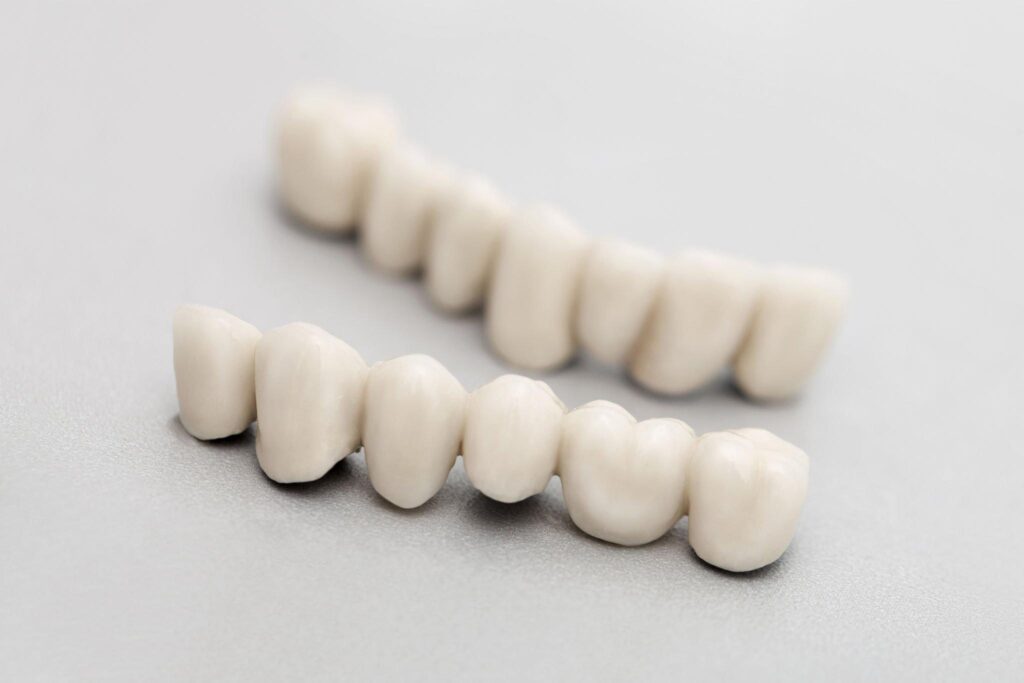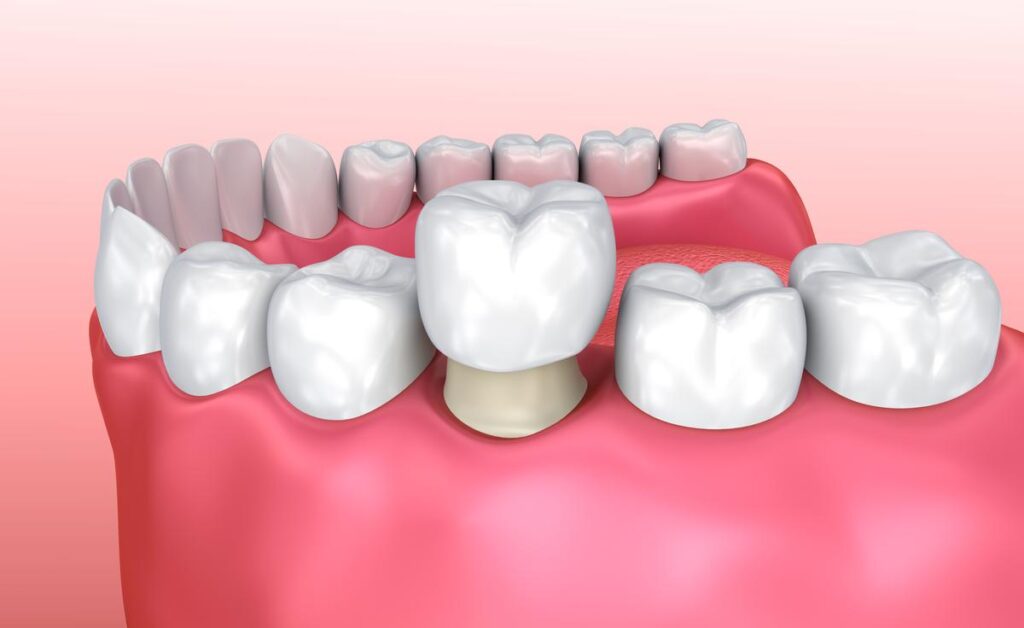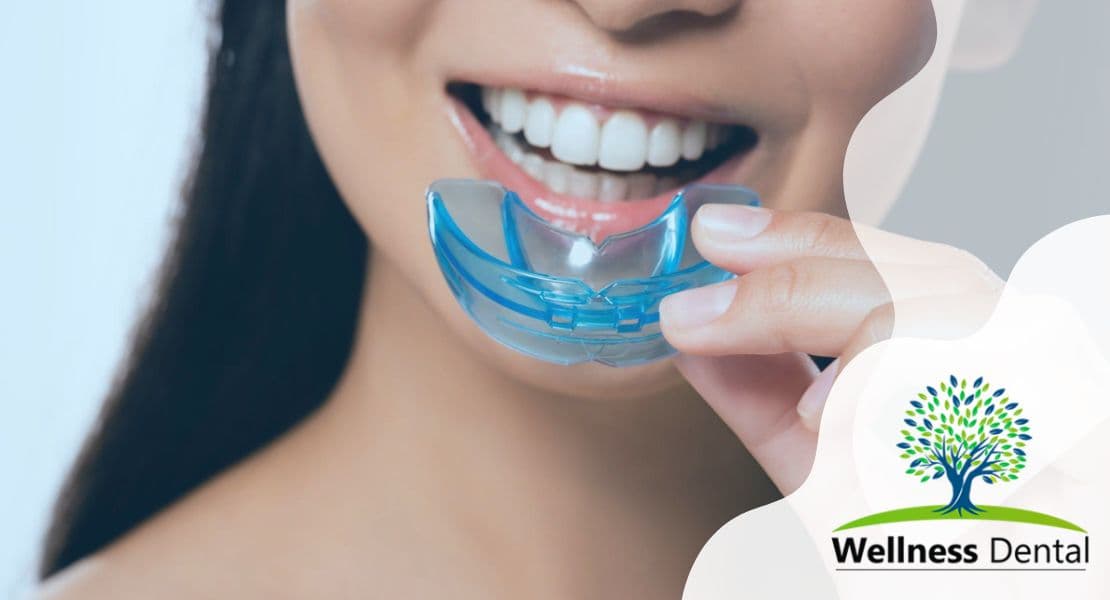Crown lengthening is a dental procedure that involves the reshaping of the gum and bone tissues surrounding the tooth to expose more of the tooth’s structure.
This procedure is commonly used to treat gummy smiles, where excess gum tissue covers a large portion of the teeth, making them appear short. It can also be done to facilitate the placement of dental crowns or to access deep cavities or tooth decay.
Crown lengthening may be necessary if a tooth is broken or decayed below the gumline, as it allows the dentist to expose more of the tooth for proper restoration. It is a surgical procedure that requires local anesthesia and may be performed using flap surgery or surgical extrusion techniques. After the procedure, patients may experience some pain and discomfort, which can be managed with pain medications and anti-inflammatory medication.
The recovery time for crown lengthening is typically a few weeks, during which patients are advised to avoid strenuous activities, hot foods, and cold temperatures. It is important for patients to maintain good oral hygiene during the recovery period to prevent infection. Overall, crown lengthening is a common and effective dental treatment used for both functional and cosmetic reasons.
Benefits of Crown Lengthening

Crown lengthening is a dental procedure that offers various benefits to both the appearance and functionality of the teeth and gums. One of the primary advantages of crown lengthening is its ability to correct a gummy smile, where excessive gum tissue covers a significant portion of the teeth, leading to an unbalanced and less aesthetic smile. By removing and reshaping the excess gum tissue, crown lengthening reveals more of the natural tooth structure and creates a more balanced gumline.
In addition to aesthetic improvements, crown lengthening also plays a crucial role in restorative dentistry. It provides the opportunity to restore decayed or broken teeth that have insufficient tooth structure for dental crowns or other dental restorations. By reducing the gum tissue and exposing more of the tooth, there is a better foundation for the placement of dental restorations, ensuring a secure and long-lasting result.
Cosmetically, crown lengthening can have a significant impact on a patient’s overall smile. It can help to achieve a symmetrical and proportional appearance by improving the balance between the teeth and gums. Furthermore, crown lengthening can enhance oral health by facilitating better oral hygiene practices. With improved access to the tooth surfaces, patients can clean their teeth more effectively, reducing the risk of tooth decay and gum disease.
Overall, crown lengthening is a versatile dental procedure that offers both cosmetic and oral health advantages. Whether for correcting a gummy smile, restoring broken teeth, or enhancing the overall appearance of the smile, crown lengthening can provide remarkable results for patients looking to achieve their desired smile.
Who is a Candidate for Crown Lengthening?
Several criteria determine if a patient is a suitable candidate for crown lengthening.
One common reason for crown lengthening is excess gum tissue. Some individuals may have a “gummy smile,” where the gums cover a significant portion of the teeth, making them appear shorter. By removing excess gum tissue, crown lengthening exposes more of the natural tooth, creating a more proportionate and appealing smile.
Tooth decay or damage is another factor that may make a patient a candidate for crown lengthening. If a tooth has decayed or broken in such a way that there is insufficient tooth structure to support a dental crown or other restoration, crown lengthening can help. By reducing the gum tissue and exposing more of the tooth, there is a better foundation for the placement of restorations, ensuring their stability and durability.
The crown-to-root ratio is also considered when determining if crown lengthening is necessary. If a tooth has been severely worn down or fractured, increasing the length of the tooth structure through crown lengthening can improve the crown-to-root ratio and provide a more stable foundation for a dental crown.
Lastly, crown lengthening may be performed for cosmetic reasons alone. Some individuals may desire a more aesthetically pleasing smile, even if their oral health is not directly affected. In such cases, crown lengthening can help achieve a more symmetrical and proportional appearance by improving the balance between the teeth and gums.
Overall, determining if a patient is a candidate for crown lengthening involves considering factors such as excess gum tissue, tooth decay or damage, crown-to-root ratio, and cosmetic desires. A consultation with a dental specialist can help assess these criteria and determine the best course of treatment.
Types of Crown Lengthening Procedures
Crown lengthening procedures are commonly performed for various reasons, whether it be to address excess gum tissue, tooth decay or damage, crown-to-root ratio concerns, or purely for cosmetic purposes.
There are different types of crown lengthening procedures available, each tailored to specific needs. One type is known as surgical crown lengthening, where the gum tissue and possibly some bone are removed to expose more of the natural tooth structure.
This allows for a stable foundation for dental restorations. Another type is cosmetic crown lengthening, which focuses on enhancing the appearance of the smile by reducing excess gum tissue and creating a more proportionate balance between the teeth and gums. Both procedures, while different in nature, aim to improve oral health and create a more aesthetically pleasing smile.
Surgical Extrusion
Surgical extrusion is a technique used in crown lengthening procedures to expose more of the tooth structure. It involves partially extracting a tooth from its socket, allowing the gum tissue and surrounding bone to be reshaped. This procedure is performed by a skilled oral surgeon or periodontist.
During surgical extrusion, anesthesia is administered to ensure the patient’s comfort throughout the procedure. The tooth is carefully loosened and gradually moved out of the socket, with the intention of exposing more of the natural tooth structure. The surrounding soft tissue and bone are reshaped to create a harmonious gum line and improve the crown-to-root ratio.
The purpose of surgical extrusion is to provide adequate tooth structure for the placement of a dental crown. When a tooth is severely decayed, broken, or discolored, crown lengthening may be necessary to create space for a more stable and effective restoration. By exposing additional tooth structure, the area becomes suitable for a long-lasting and aesthetically pleasing dental crown.
Surgical extrusion is a common procedure in crown lengthening and typically has a relatively short recovery time. Patients are advised to follow post-operative instructions, such as maintaining proper oral hygiene, avoiding hot foods and strenuous activities, using ice packs to reduce facial swelling, and taking prescribed pain medications if necessary.
In conclusion, surgical extrusion is an important technique used in crown lengthening procedures to extract a tooth partially from the socket, allowing for the exposure of more tooth structure. This technique is performed to facilitate the placement of a dental crown for both functional and cosmetic reasons.
Gingival Flap Surgery
Gingival flap surgery is a crucial step in the crown lengthening procedure, aimed at reshaping the gum tissue and bone to expose more of the tooth structure. This surgical technique involves several steps to achieve the desired outcome.
The procedure begins with the administration of anesthesia to ensure the patient’s comfort throughout the surgery. Once the patient is numb, an incision is made along the gum line, creating a small flap of tissue that can be elevated to expose the underlying tooth and bone.
Next, the flap is carefully elevated, providing access to the underlying structures. This allows the dentist to assess the tooth and bone levels accurately and determine the amount of tissue that needs to be removed to create the desired crown lengthening effect.
Bone recontouring is then performed, where excess bone may be removed or reshaped to achieve the ideal shape and contour. This is particularly important in cases where the bone level is too high and needs to be adjusted to create a more balanced and aesthetically pleasing gum line.
Finally, after the necessary modifications are made, the flap is sutured back into place using biocompatible materials. These sutures promote proper healing of the tissue and ensure the stability of the gums during the recovery period.
Gingival flap surgery plays a crucial role in crown lengthening procedures as it allows for precise reshaping of the gum tissue and bone to create an ideal environment for the placement of dental crowns. This technique helps to improve the crown-to-root ratio and provides a stable foundation for the restoration.
Crown Lengthening Surgery
Crown lengthening surgery is a dental procedure that involves the removal of excess gum tissue and, if necessary, the reshaping of the underlying bone structure. The purpose of this surgical procedure is to expose more of the tooth structures, such as the crown, which may be partially covered by gum tissue.
The procedure begins with the administration of anesthesia to ensure patient comfort throughout the surgery. Once the patient is numb, an incision is made along the gum line, creating a small flap of tissue that can be elevated to expose the underlying tooth and bone.
By elevating the flap, the dentist can accurately assess the tooth and bone levels and determine the amount of tissue that needs to be removed. In some cases, bone recontouring may be necessary to achieve the desired shape and contour of the gums.
Crown lengthening surgery may be performed for several reasons. It may be necessary to create more space for the placement of dental crowns or to expose more of the natural tooth for cosmetic reasons. Additionally, crown lengthening can be beneficial in cases of tooth decay, broken teeth, or when the crown-to-root ratio is inadequate.
Overall, crown lengthening surgery is a common procedure that effectively removes excess gum tissue and reshapes the underlying bone to create a more aesthetically pleasing and functional smile.
Temporary Crowns and Veneers

Temporary crowns and veneers play a crucial role in crown lengthening procedures. These temporary restorations are used to protect the prepared teeth and gums during the healing phase before the placement of permanent crowns.
Temporary crowns are necessary for several reasons. First and foremost, they provide protection to the tooth structure that has been exposed during the crown lengthening surgery. This helps prevent sensitivity and discomfort while allowing the gums to heal properly. Additionally, temporary crowns help maintain the natural tooth’s aesthetics and function while the permanent crowns are being fabricated.
Temporary crowns are typically made from acrylic or composite resin materials. These materials offer temporary protection and can be easily adjusted or modified if necessary. They are also easily removed during the next dental visit when the permanent crowns are ready to be placed.
Similarly, temporary veneers are used in crown lengthening procedures to cover the prepared teeth and provide temporary aesthetics. They are typically made from composite resin or temporary bonding materials, offering an esthetically pleasing appearance until the permanent veneers are custom-made.
Temporary crowns and veneers are temporary solutions that allow for the proper healing and preparation time before the placement of permanent restorations. They serve the important purpose of protecting the teeth and gums while maintaining a natural appearance.
Laser-Assisted Crown Lengthening Procedure
Laser-assisted crown lengthening is a modern technique that offers several advantages over traditional methods. This innovative procedure involves the use of laser technology to remove excess gum tissue and reshape the gumline, allowing for better access to the tooth structures.
Unlike conventional crown lengthening techniques, which involve using a scalpel to make incisions and remove gum tissue, laser-assisted crown lengthening utilizes a focused laser beam. This laser beam precisely targets and vaporizes the excess gum tissue, resulting in minimal bleeding and trauma to the surrounding areas.
One of the main benefits of laser-assisted crown lengthening is the reduced discomfort experienced by patients. The laser technology cauterizes blood vessels during the procedure, minimizing bleeding and reducing post-operative pain. In addition, the laser’s precision allows for a quicker and smoother healing process, with patients experiencing faster recovery times compared to traditional methods.
Another advantage of laser-assisted crown lengthening is the improved aesthetic outcome. The laser allows for precise and accurate gumline reshaping, resulting in a more symmetrical and aesthetically pleasing gum contour. This can greatly enhance the appearance of a smile and provide a more balanced and natural tooth-to-gum ratio.
In conclusion, laser-assisted crown lengthening offers numerous benefits, including reduced discomfort, faster healing times, and improved aesthetics. This advanced technique, utilizing laser technology to remove excess gum tissue and reshape the gumline, is a highly effective and minimally invasive option for patients requiring crown lengthening procedures.
Bone Removal Procedure
During crown lengthening surgery, bone removal is often necessary to achieve the desired outcome. This procedure involves the careful removal of excess bone to expose more of the tooth structure, allowing for the placement of dental crowns or other restorative treatments.
The purpose of bone removal in crown lengthening is to create enough space between the gum line and the bone level. When there is excess gum tissue or the bone level is too high, it can result in a gummy smile or inadequate tooth structure for dental restorations. By removing a small amount of bone, the dentist can reshape the gum line and reveal more of the natural tooth, improving both the aesthetics and functionality of the tooth.
The bone removal procedure is typically performed under local anesthesia to ensure patient comfort. The steps involved in the bone removal procedure include:
1. Incision: The dentist makes a small incision in the gum tissue to access the underlying bone.
2. Flap creation: A flap of tissue is gently lifted and retracted to expose the targeted bone area.
3. Bone removal: Using specialized instruments or a dental laser, the dentist carefully removes the excess bone, sculpting it to the desired shape and contour.
4. Smoothing: After the bone removal, the dentist smoothes and reshapes any rough edges to ensure a proper fit and esthetic result.
5. Tissue repositioning: The flap of tissue is repositioned and sutured back into place.
6. Healing and recovery: Following the bone removal procedure, patients are instructed on proper oral hygiene practices and given guidelines to follow for proper healing and recovery.
This bone removal procedure is a common step in crown lengthening surgeries, allowing for improved tooth structure exposure and enhanced aesthetic outcomes.
Preparation for a Crown Lengthening Procedure
Before undergoing a crown lengthening procedure, there are several important preparations that need to be made. First and foremost, it is essential to have a detailed discussion with your dentist or periodontist about your medical history, current oral health, and any concerns or expectations you may have. This will help the dental professional assess your suitability for the procedure and develop a personalized treatment plan.
Additionally, it is important to follow any pre-operative instructions provided by the dental team, such as fasting or limiting the consumption of food and beverages before the procedure. This is to ensure that the anesthesia used during the procedure is effective and safe.
Some dental professionals may also prescribe medication to be taken before the procedure, such as antibiotics or pain relievers. Lastly, it is crucial to make any necessary arrangements for transportation to and from the dental office on the day of the procedure, as well as plan for some downtime to allow for proper healing and recovery afterward. By properly preparing for a crown lengthening procedure, patients can help ensure a smooth and successful dental treatment experience.
Dental Examination and Medical History Evaluation
Before undergoing a crown lengthening procedure, a thorough dental examination and medical history evaluation are essential. These steps are crucial in determining the patient’s suitability for the procedure and ensuring optimal outcomes.
During the dental examination, the dentist will assess the patient’s oral health, including the condition of the teeth, gums, and surrounding structures. Existing tooth structures are evaluated to determine the extent of crown lengthening required. This evaluation helps the dentist plan and prepare for the procedure.
In addition, an evaluation of the bone tissue surrounding the tooth is conducted to assess its health and determine if any bone reshaping is necessary. This step is crucial as the bone level affects the success of the crown lengthening procedure and the stability of the dental crown.
Furthermore, a medical history evaluation is also performed to identify any conditions or medications that may impact the procedure or the patient’s ability to heal. Certain medical conditions or medications may require special precautions or modifications to the treatment plan.
Additionally, any signs of infection or inflammation in the oral cavity are noted during the evaluation. It is essential to address these issues before proceeding with the procedure to minimize the risk of complications and ensure optimal healing.
In conclusion, conducting a thorough dental examination and medical history evaluation before a crown lengthening procedure is imperative to assess the patient’s oral health, existing tooth structures, bone tissue, and any signs of infection. This evaluation is crucial in planning and preparing for the procedure, ensuring optimal outcomes, and minimizing potential risks or complications.
Pre-Procedure Instructions
Before undergoing a crown lengthening procedure, patients are typically provided with specific instructions to follow. These instructions are crucial in ensuring a successful and smooth treatment outcome. Here are some common pre-procedure instructions for patients:
1. Oral Hygiene: Patients are advised to maintain a good oral hygiene routine, including brushing and flossing their teeth regularly. This helps remove any bacteria or plaque that can contribute to infection or complications during the procedure.
2. Medication Management: Patients may be instructed to temporarily stop or adjust certain medications prior to the procedure. It is important to follow these instructions to minimize any potential complications or interactions with anesthesia or pain medications used during the procedure.
3. Fasting: Depending on the type of anesthesia used, patients may be required to fast for a certain period before the procedure. This is to ensure an empty stomach and reduce the risk of aspiration.
4. Arrange for Transportation: Since crown lengthening procedures often involve the use of anesthesia, patients are advised not to drive themselves home afterward. It is important to arrange for transportation to and from the dental office to ensure their safety.
5. Follow Specific Preparation Guidelines: Patients may be instructed to avoid certain foods and beverages, such as hot or cold temperatures, hard or chewy foods, and alcohol, before the procedure. This helps minimize discomfort and reduce the risk of complications during and after the treatment.
By strictly adhering to these pre-procedure instructions, patients can help optimize the outcome of their crown lengthening procedure. Following these guidelines ensures a clean and prepared surgical site, reduces the risk of infection and complications, and enhances the overall success and healing process. Always consult with the dentist or oral surgeon for personalized instructions based on individual needs and medical history.
The Procedure: What to Expect during the Treatment?
The crown lengthening procedure is a dental treatment that involves reshaping the gum tissue and sometimes the underlying bone to expose more of the natural tooth structure.
This procedure is commonly performed for both functional and cosmetic reasons, such as to remove excess gum tissue, address a “gummy smile,” prepare the tooth for a dental crown, or treat decayed, broken, or discolored teeth. Understanding what to expect during the crown lengthening treatment is important for patients to feel informed and prepared for the procedure.
Anesthesia Options

When undergoing a crown lengthening procedure, ensuring patient comfort is of utmost importance. To achieve this, different anesthesia options may be offered. These options aim to minimize pain and discomfort during the treatment.
1. Local anesthesia: This is the most common anesthesia option used for crown lengthening procedures. It is administered by injecting medication directly into the treatment area. Local anesthesia numbs the gum and tooth structures, allowing the patient to remain alert and awake during the surgery while ensuring a pain-free experience.
2. Sedation anesthesia: For patients who experience anxiety or fear before dental procedures, sedation anesthesia may be recommended. This option induces a state of deep relaxation and calmness. It can be administered orally or intravenously before the surgery. By reducing anxiety levels, the patient can undergo the crown lengthening procedure with ease and comfort.
3. General anesthesia: In more complex cases or for patients with extensive dental work, general anesthesia may be used. This option is administered intravenously and renders the patient completely unconscious throughout the procedure. General anesthesia provides maximum comfort and ensures that the patient remains unaware of any pain or discomfort during the crown-lengthening surgery.
The choice of anesthesia depends on the patient’s comfort level, the complexity of the procedure, and the dentist’s recommendation. Discussing the various options with the dental professional will help determine the most suitable anesthesia choice for crown lengthening procedures, ensuring a pain-free and comfortable experience.






